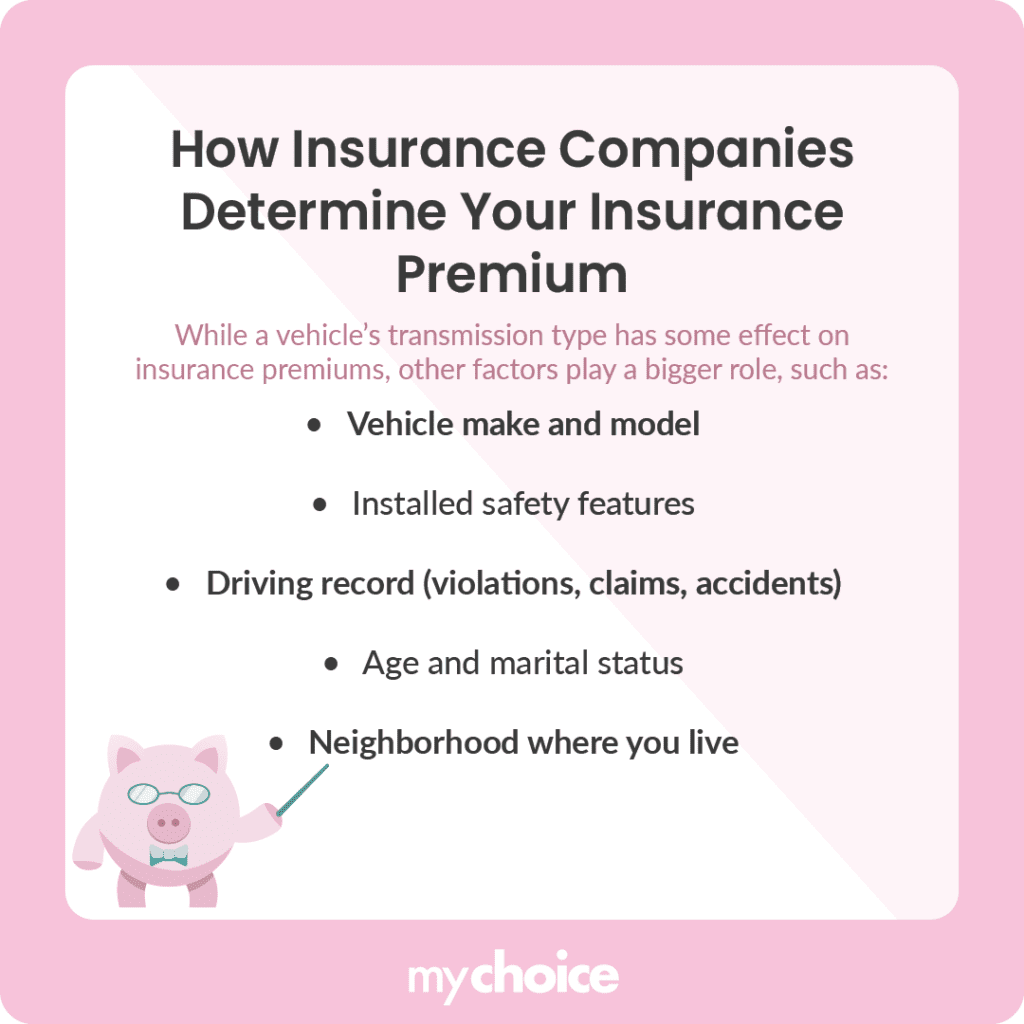When buying a new car, one of the most important things to consider is whether to purchase an automatic or a manual transmission car. Driving stick and automatic are two very different skills, and when choosing a car to purchase, this difference can also affect how much you pay in car insurance.
Are automatic cars more expensive to insure in Canada? How much is the difference when insuring an automatic or manual car? Read on to find out more about the differences between manual and automatic cars and why it matters when it comes to your insurance.
Main Differences on the Road
There are quite a few differences between automatic and manual cars. The most obvious difference is the transmission system they use. With manual cars, you need to use the clutch pedal and gear stick to manually shift gears. This allows for greater control over the vehicle’s power transfer and speed, as the driver decides when to change gears. Automatic transmission cars automatically shift gears based on speed and engine load, requiring no input from the driver.
Driving an automatic transmission vehicle is much easier in general since you don’t need to focus on shifting gears, allowing drivers to have full concentration on steering and traffic conditions. On the other hand, manual transmission cars allow for a greater degree of control over the vehicle, which is a big plus for experienced driving enthusiasts. Choosing when to shift gears can give drivers more performance in certain conditions while having gears handled automatically can result in a more relaxed and comfortable drive.
Automatic vehicles are also generally considered safer, as they reduce the risk of stalling and allow drivers to keep both hands on the steering wheel. This can be particularly beneficial in heavy traffic situations, especially in stop-and-go traffic, which is common in cities like Toronto. However, in off-road or icy conditions, having greater control over the transmission can give drivers more control of the vehicle when they need more traction.
Car Insurance Differences
When insuring a car, an automatic vehicle can cost a little bit more to insure compared to manual vehicles, though this greatly depends on your insurer. This comes from a few factors, though the difference in insurance premiums between manual and automatic cars can be negligible, usually around 5%. Insurers will generally price auto insurance policies based on more factors than just the transmission system of a vehicle.
In general, automatic transmission cars can be slightly more expensive to insure than manual cars due to the higher cost of purchasing and repairing them. Since automatic cars have more complex systems managing the transmission, repairing or replacing the car can be more costly to insurance companies, especially in cases of transmission failure. A manual transmission replacement typically costs $1,500 to $3,000, while an automatic can cost $2,000 to $4,000.
Take note that this completely depends on your insurance company. Many insurance companies will only consider the make and model of your vehicle and disregard whether it’s a manual or automatic transmission. Make sure to consult your insurance agent to check whether they charge higher premiums for automatic vehicles.
How Insurance Companies Determine Your Insurance Premium
While the transmission system of a vehicle may have a small impact on your insurance premiums, insurance companies look at a lot of other factors when determining your auto insurance rate. These factors include:
- Your vehicle’s make and model
- Safety features installed on your car
- Your age and marital status
- Any previous traffic violations, insurance claims, or accidents reflected on your driving record
- The neighbourhood you live in
- How long you’ve had your license and your license class
- How much you drive yearly
- The amount of coverage your policy gives

These factors generally paint a picture of how likely you are to get into an accident in the future and the likelihood that your insurer will need to pay out an insurance claim. If you have aftermarket safety features such as a Tag tracking system, your insurer may give you a lower insurance rate.
Key Advice From MyChoice
- Depending on your insurer, you may pay a higher premium for an automatic transmission car. However, many insurance companies will only consider the make and model of your vehicle rather than the transmission system.
- The difference between the insurance rates of a manual vs automatic transmission car is negligible compared to other factors that insurers use to determine your premium.
- Driving safely can be easier with an automatic transmission car, since you don’t need to concentrate on shifting, keeping your hands on the steering wheel and your eyes on the road.








